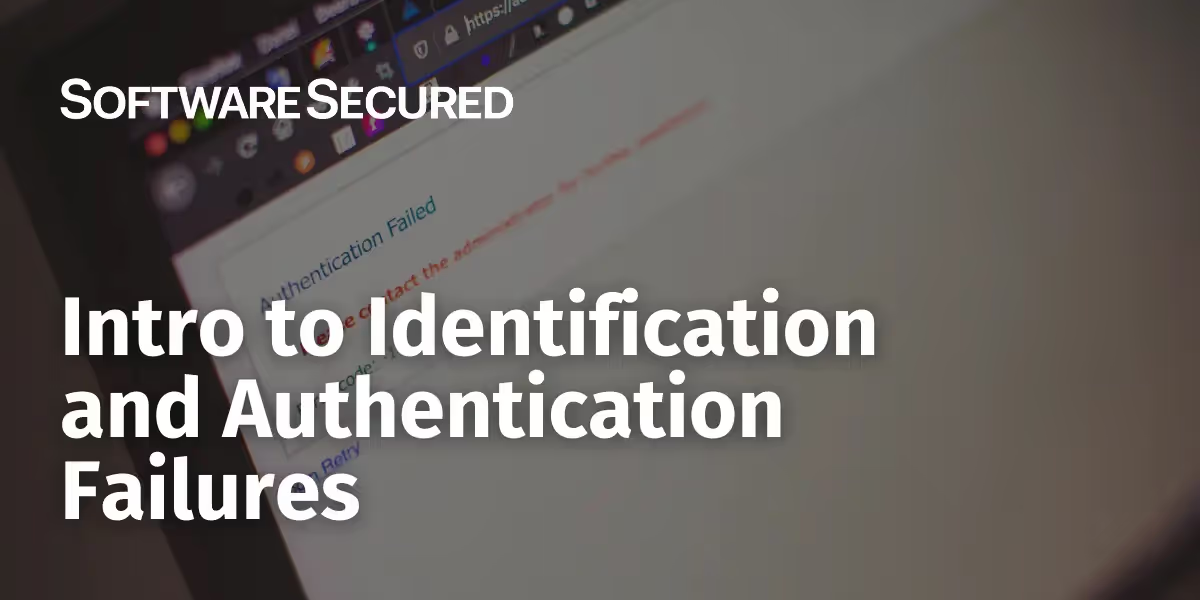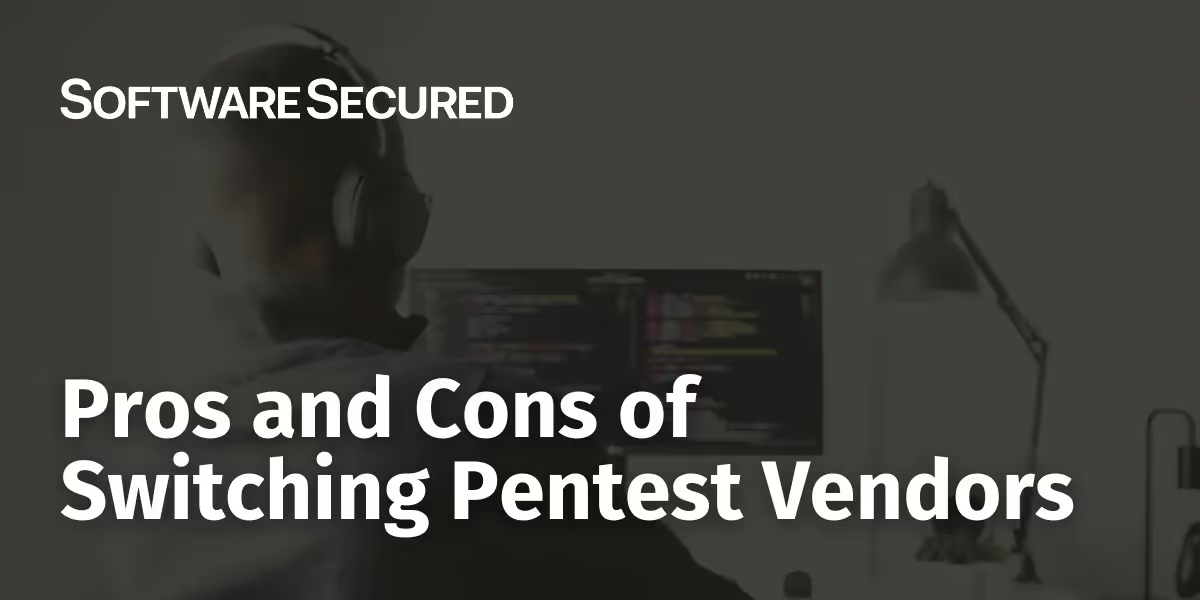How Much Does Penetration Testing Cost in 2025
Wondering how much penetration testing costs? Learn what impacts pricing, from scope to methodology, and how to avoid paying for low-value, checkbox tests.
Penetration testing is a proactive security assessment in which ethical hackers simulate real-world attacks to identify vulnerabilities in your applications, networks, and systems. Services vary widely by vendor—ranging from automated scans to manual, expert-led engagements with actionable reporting and remediation support. Pricing typically spans from $4,000 for basic external tests to over $100,000 for enterprise-grade, continuous testing platforms. This guide will walk you through vendor selection criteria, service tiers, hidden fees, and budgeting strategies. You’ll gain insight into pricing models, scope-definition best practices, and negotiation tips—ensuring you invest efficiently and achieve a security posture that will help you be audit ready and help you sleep better at night.
How Much Does Penetration Testing Cost?
A typical penetration test can range from as little as $5,000 to as much as $100,000 or more, depending on scope and depth. At the low end ($ 5,000–$ 10,000), you’ll receive a focused external network or simple web application scan, often leveraging automated tools with minimal manual verification.
Mid-tier engagements ($15K–$50K) include deeper, human-led penetration tests that cover your external network, as well as an authenticated web application penetration test. For the upper range of this range, mobile penetration testing may also be included.
That price range includes deeper manual vulnerability analysis and a standard report with remediation guidance. Enterprise-grade or continuous testing platforms ($75K–$150K+) offer full-stack coverage—API, mobile, internal and external cloud infrastructure.
Usually, for that range, you would expect a bigger external and internal network as well as more mature applications. Usually, at this price range, you would expect to receive executive summaries, developer dashboards, retests, and advisory support.
Key cost drivers
- Scope & complexity: Number of IPs, apps, endpoints per app and cloud regions.
- Methodology: Automated vs. manual, tool-assisted vs. expert-only.
- Compliance requirements: SOC 2, PCI DSS, HIPAA demand extra documentation and retests.
- Reporting & support: Level of detail, remediation workshops, retest rounds.
- Vendor expertise: Boutique firms or highly specialized consultants command premium rates.
Here is a quick Example
Acme FinTech, a mid-market payments startup, commissioned a combined external network pentest plus authenticated pentest covering three web applications. The engagement included manual pentesting mapped to up to five industry standards such as OWASP Top 10, ASVS and others, a detailed executive summary, and three retest rounds. Total cost: $42,000, delivered within a three-week window, with multiple testers working in parallel.
Factors Affecting Penetration Testing Cost
Testing Scope
- Number of assets
More applications, servers, IP addresses, or cloud assets increase the hours required to fully assess each target, directly raising labor and report-generation costs. - Complexity
Highly customized or microservices architectures require deeper research and bespoke exploit development, resulting in higher per-asset fees. - External vs. internal
Internal tests (conducted from inside the network) often uncover a wider variety of issues—requiring additional tools, pivot-testing, and time—than internet-facing tests, so they typically cost 10–30% more.
Test Type
- Black box
Simulating an external attacker with zero network knowledge, black-box tests involve extensive reconnaissance and trial-and-error, meaning more hours and higher costs than gray- or white-box scans. - Gray box
With partial credentials provided, gray-box testing strikes a balance: reconnaissance effort is reduced, so costs generally fall midway between black and white approaches. - White box
Full access to the system, whether it is source code and/or architecture diagrams accelerates vulnerability discovery, often cutting time (and cost) by 20–40% compared to black-box engagements. - Red team
Highly targeted, adversary-emulation exercises span weeks and integrate physical, social-engineering, and technical attack vectors—commanding premium rates that can start at $45K for a small campaign.
Tester Expertise & Brand
- Certifications (OSCP, CREST, GIAC)
Certified professionals command higher hourly rates (often $200–$400/hr) because their credentials demonstrate advanced skill and rigorous training. - Firm reputation
Boutique consultancies with marquee clients or established “Big Four” firms can tack on brand premiums of 20–50% above market median, reflecting their perceived trustworthiness and regulatory clout.
Method & Tools
- Manual vs. automated
Automated scans (using vulnerability-scanner subscriptions) incur license fees but lower labor hours; manual testing uncovers logic flaws and chained exploits, requiring expert time, in addition to subscription-based tools) and thus costing more. - Frameworks (OWASP, NIST, WSTG, ASVS)
Adopting multiple or heavyweight frameworks can lengthen reporting and evidence-gathering phases, increasing hours by 10–25% depending on the documentation depth and compliance mapping required.
Compliance & Industry Requirements
- PCI DSS
PCI’s strict segmentation and retest mandates often requires more testing, reporting and remediation verification effort, adding 15–30% in compliance-surcharge fees. - HIPAA
Healthcare environments require proof of ePHI handling safeguards. HIPAA-aligned tests, which include extra controls validation around ePHI, cross-tenant tests and other privacy-specific test, typically cost 10–20% more. - ISO 27001
Mapping findings to ISO controls and generating gap analyses adds reporting overhead, bumping up costs by around 5–15%.
Other Factors
- Onsite vs. remote
Onsite engagements incur travel, per-diem, and scheduling constraints—often adding $1,000–$3,000 in fixed fees—whereas remote testing eliminates these but may impose time-zone coordination challenges. - Remediation support
Offering active remediation guidance, live workshops, or code-fix reviews extends consultant involvement post-test, leading to add-on retainers or higher hourly blocks.
Retesting support
Bundling retest rounds (to confirm fixes) into the project scope typically raises the total by 10–20%, but negotiating multiple retests upfront can lower the per-round rate compared to ad-hoc follow-ups.
Together, these factors combine to shape pentesting budgets that can range from small one-time scans (under $10K) to fully managed, compliance-driven programs ($100K+). Understanding each driver helps you tailor scope and vendor choices to meet both security objectives and budgetary constraints.
What Are You Getting When You Pay for a Pentest?
1. Manual Testing Hours by Actual Humans
Engagements are scoped in blocks of dedicated manual effort, where experienced security consultants probe every single IP, API endpoint or GraphQL mutation.. These skilled testers craft custom exploits, chain vulnerabilities, and uncover edge-case flaws that tools alone can’t detect, ensuring a depth of coverage aligned with your risk profile.
2. Business Logic Testing
Beyond technical vulnerabilities, expert assessors simulate real-world misuse of your application’s workflows. They’ll validate things like transaction approvals, custom authorization logic, or cross-tenant issues to reveal logic flaws—such as bypassing multi-step processes or exploiting hidden endpoints—that automated scanners often overlook.
3. Retesting & Verification Rounds
Discovering issues is only half the equation. Quality providers include at least one complementary retest to verify that remediation efforts actually close each gap. For critical applications, you can often negotiate “test-until-fixed” terms—or bundle multiple retest rounds—to push your residual risk as close to zero as possible before go-live or audit submission.
4. Deliverables: From 300-Page Reports to Actionable Dashboards
- Traditional PDF Reports: Comprehensive 200–300-page documents detailing each finding, proof-of-concept code, impact narratives, and remediation recommendations—ideal for security teams and external auditors.
- Interactive Dashboards: Modern portals structure findings by severity and business impact, provide developer-focused remediation snippets, track fix status in real time, and map issues back to compliance frameworks (e.g., SOC 2, PCI DSS), making it easy to prioritize and demonstrate progress.
5. Consultation & Fix Verification
Top-tier testers don’t vanish after delivery. You’ll get live debrief sessions—via video call or on-site—to walk through root causes and strategic fixes. Some teams offer “office hours” for ad-hoc questions, code-review support on complex patches, and final verification steps where testers re-exploit previously vulnerable paths, confirming that controls hold under pressure.
Bringing It All Together
A full-spectrum penetration test blends deep manual expertise, targeted business-logic analysis, and robust verification cycles to deliver not just a list of bugs, but a partnership in risk reduction. You emerge with:
- Human-validated insights that go beyond CVSS scores
- Concrete proof of remediation through retesting
- Actionable outputs that integrate smoothly with developer workflows
- Audit-ready artifacts for compliance evidence
- Strategic guidance for strengthening your security posture long term
This comprehensive approach ensures you’re not simply scanning for known issues—you’re building confidence that your critical workflows and controls stand strong against real-world adversaries.
Comparing Penetration Testing Models
1. Automated Scan
- Avg. Cost: $1,000–$5,000
- Quality: Low to mixed. Relies entirely on vulnerability scanners that detect known CVEs, missing business-logic flaws and chained exploits. Reports often include false positives that require manual triage.
- Retesting: Rarely included. If offered, it’s typically a single, narrow rescanning of previously flagged issues, often at additional cost.
- Who It’s For: Organizations with very limited budgets or those seeking a quick health check before more in-depth testing; useful as a baseline but insufficient for high-risk or compliance-driven environments.
2. Freelance Engagement
- Avg. Cost: $5,000–$20,000
- Quality: Highly variable. Independent consultants bring seasoned skills—potentially uncovering subtle vulnerabilities—but results depend on individual expertise and available time. May lack standardized methodology or peer review.
- Retesting: Sometimes included as a “courtesy” single retest; additional rounds usually billed hourly ($150–$300/hr). Quality assurance hinges on the freelancer’s willingness to revisit and verify fixes.
- Who It’s For: Startups or SMBs seeking personalized attention on a moderate budget; ideal when you have internal security expertise to validate the freelancer’s output and manage follow-up.
3. Mid-Tier (Manual + Automated Hybrid)
- Avg. Cost: $15,000–$50,000
- Quality: Solid. Combines automated scanning with dedicated manual follow-up—catching both known vulnerabilities and more complex issues. Reports follow a structured methodology (often OWASP-aligned) and include prioritized remediation steps.
- Retesting: Usually one free retest round for all high- and critical-severity findings; extra retests available at negotiated rates or within a small retest-bundle discount.
- Who It’s For: Growing companies that require deeper assurance without the premium price tag—ideal for those preparing for SOC 2, PCI DSS, or ISO 27001 audits and needing a balanced approach.
4. Premium (Full-Manual + Retesting)
- Avg. Cost: $20,000–$150,000+
- Quality: Top-flight. Entirely manual, human-driven assessments by a team of senior consultants. Includes thorough business-logic testing, custom exploit development, and chained-attack simulations. Delivers minimal false positives and maximum coverage.
- Retesting: Often unlimited or “test-until-fixed” under an SLA, ensuring every high-risk issue is verified closed at no additional fee. Multiple retest cycles are baked into the package.
- Who It’s For: Enterprises, heavily regulated organizations, or anyone facing significant compliance mandates (e.g., HIPAA, financial services). Also suited to critical infrastructure or products where risk tolerance is near zero and board-level assurance is required.
Putting It All Together
- Automated scans deliver quick, low-cost insight but stop short of true assurance.
- Freelancers offer flexibility and potential depth for moderate budgets, but results depend on the individual.
- Mid-tier services strike a balance—melding automation with manual verification and providing essential retesting to satisfy most audit requirements.
- Premium engagements deliver comprehensive human-driven testing, unlimited verification, and the highest confidence—at a correspondingly higher investment.
Selecting the right tier hinges on your risk profile, compliance needs, internal expertise, and budget. By aligning your threat model and audit roadmap with one of these service levels, you’ll ensure your pentest investment delivers the assurance, remediation guidance, and documentation your organization truly needs.
Best Practices for Getting More from Your Pentesting Budget
To ensure maximum value from your pentest, define a clear scope upfront—determine which assets, environments, and success criteria matter most. Choose the right testing type—black, gray, white-box, or red team—based on your risk profile and compliance needs. Bundle related assets when possible to streamline engagement and reduce per-asset fees. Ask about retesting and remediation support, securing at least one free retest round and consultative fix-verification. Understand pricing models—hourly, per-asset, or retainer—and budget accordingly. Vet the deliverables, confirming report depth, dashboards, and compliance mapping. Prioritize quality over cost: investing in thorough assessments delivers higher ROI by identifying and addressing vulnerabilities before they become costly breaches.
Conclusion
Understanding penetration testing costs is crucial for aligning security investments with business goals and ensuring robust risk mitigation. By clarifying scope, selecting appropriate test types, and balancing asset bundles and pricing models, organizations can plan effectively and maximize ROI. Software Secured delivers value-driven penetration testing through flexible service tiers—from automated scans to full-manual red team exercises—each including built-in remediation guidance and retesting support. Whether you’re preparing for compliance audits or guarding critical infrastructure, our expert team helps you budget confidently for comprehensive security assurance. Ready to secure your environment? Contact Software Secured for assessment and pricing tailored to your needs.

.avif)



